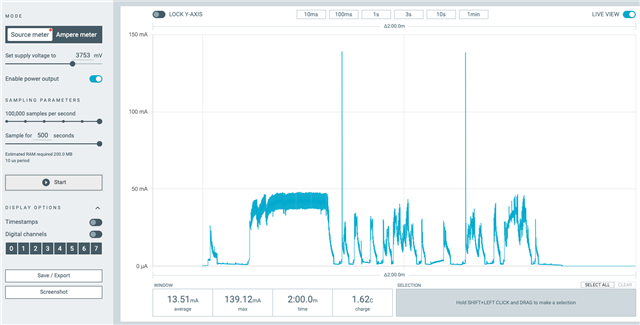Hello,
in Germany, O2/Telefonica (MCC+MNC: 26203) recently launched its NB-IoT network on a larger scale. Unfortunately, we see very high latencies (20-30s) in UDP communication with the nRF9160 compared to the other available networks (Vodafone-26202 and Deutsche Telekom-26201). In addition, we see that packets are processed in bursts, if at all, and an unusual pattern of power consumption. We cannot explain these, also due to the very good network coverage. Therefore, I would like to ask here for an analysis by suitable person at Nordic.
Here are the facts first:
- nRF9160 SiP (Rev 2)
- MFW 1.3.4
- Modem Lib 2.4.0
The symptoms are detectable on the nRF9160 DK and own hardware. Also tried firmware based on freeRTOS and Zephyr which are completely different, the result of high latency is the same. Different SIM cards were also tried. However, the problem occurs only with NB-IoT, with LTE-M everything works very well regardless of the chosen provider.
To get closer to the matter I have recorded some logs:
- Modem Traces
- Wireshark traces
- Screenshot from the Power Profiler
- The signal quality (CINR) is very good
- Telekom: '+CEINFO: 1,1,C,8,1,-87,6' -> DL-R:8x,UL-R:1x,rsrp:-85 dBm, cinr:8 dB
- Telefonica: '+CEINFO: 1,1,C,8,1,-74,15' -> DL-R:8x,UL-R:1x,rsrp:-74 dBm, cinr:15 dB
Once each for the problematic network of Telefonica and Deutsche Telekom. Both show a completely different behavior. Whereas the modem at Telefonica permanently needs 25mA+peaks, this is not the case at all at Telekom. See also these two pictures for comparison:
 |
 |
| Telefoncia Power Consumption (high latencies) | Telekom Power Consumption (low latencies) |
I hereby ask someone at Nordic to look at the attached traces in comparison to each other and to assess what the problems at Telefonica could be and whether a malfunction of the modem can be ruled out. The communication is deliberately kept simple and unencrypted so as not to distract from the real problem. But I can say that the normally used DTLS secured communication with such high latencies and the current implementation in nrf-modem does not work or only very unreliable.
Thank you in advance!
Download Traces:
